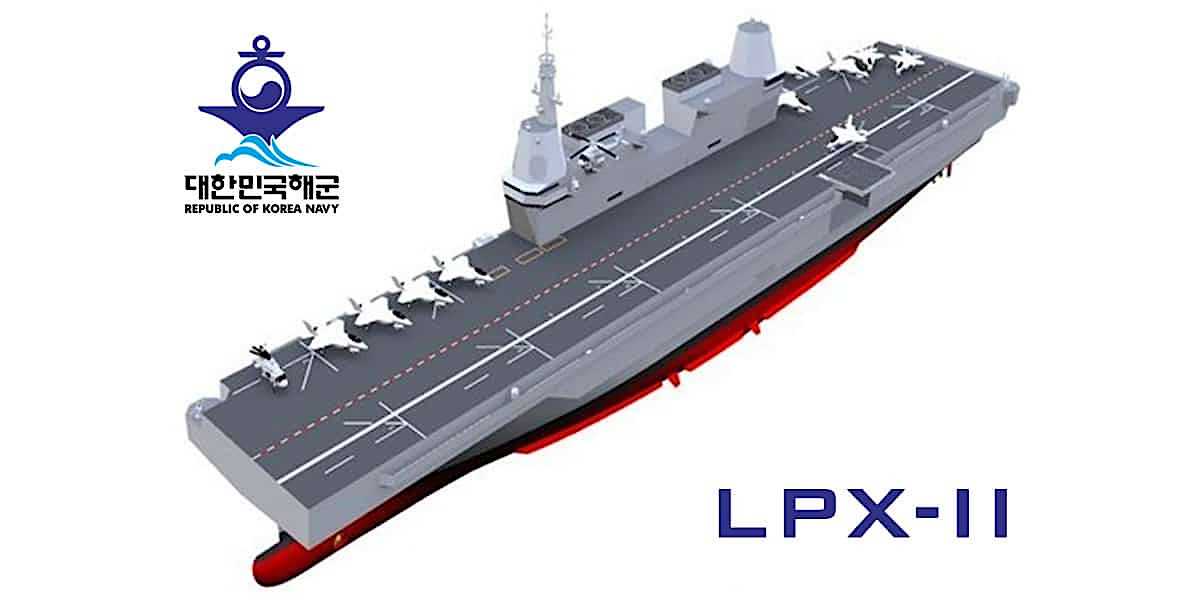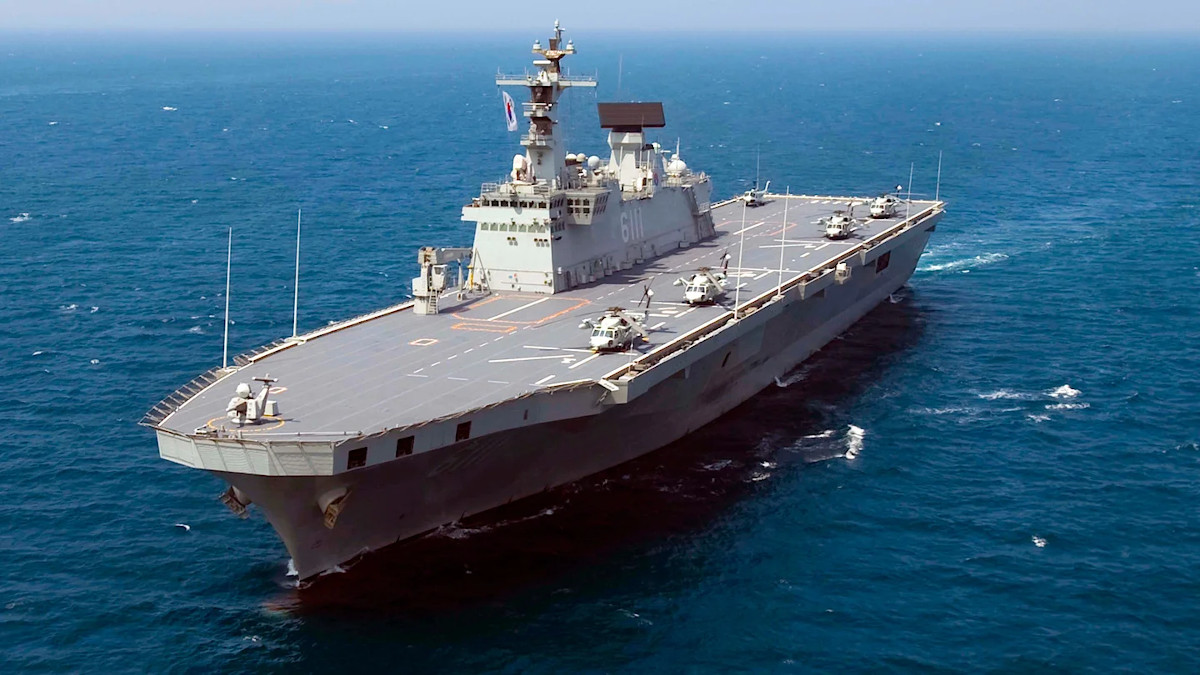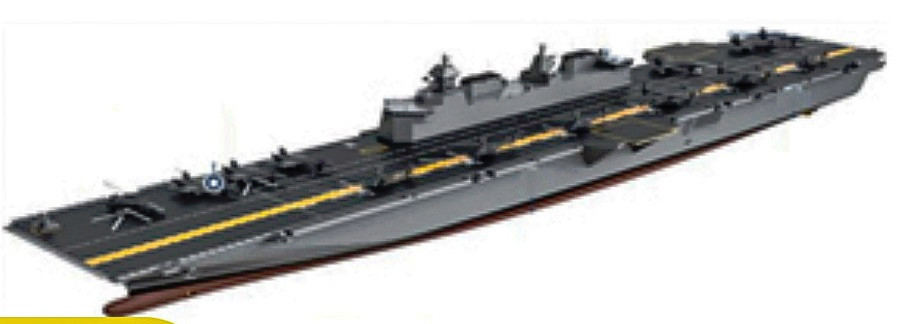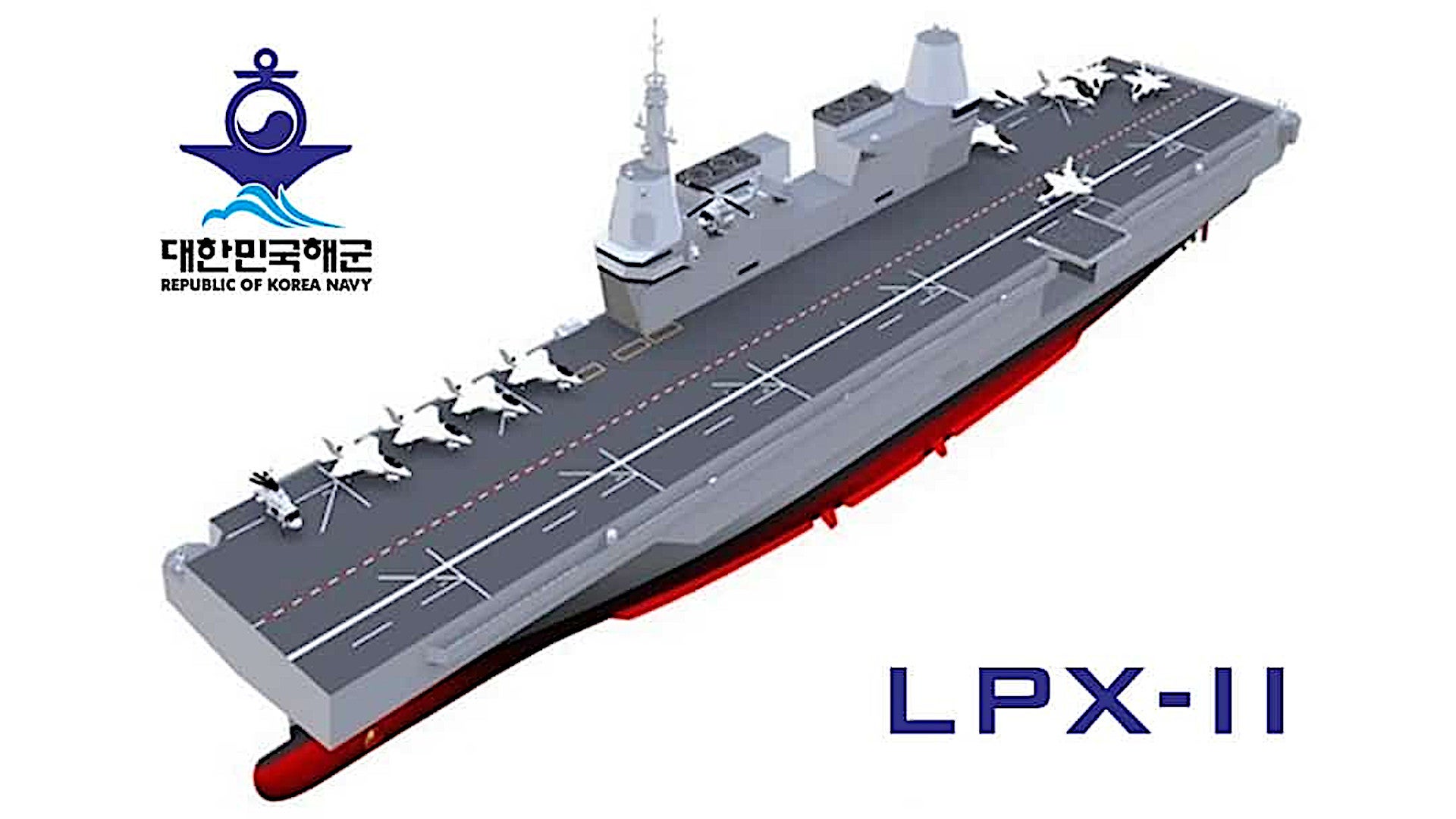The South Korean government has revealed that its next amphibious assault ships will be aviation-centric platforms with a heavy focus on operations involving the country’s future short and vertical takeoff and landing capable F-35B Joint Strike Fighters. The vessels will not have a well-deck to launch and receive landing craft or amphibious vehicles and will be in a configuration more akin to the U.S. Navy’s first-in-class USS America.
The new details about the LPX-II program, previously referred to as LPH-II, were included in a larger South Korean defense spending plan for the 2021 to 2025 timeframe that authorities in Seoul released on Aug. 10, 2020. The South Korean Ministry of Defense also released a new rendering of the ship’s design, as it exists now, which is seen at the top of this story and below.

South Korea’s plan to acquire new big-deck amphibious assault ships that could support F-35Bs first emerged publicly last year and was the product of deliberations that also considered plans to buy larger dedicated aircraft carriers. Hyundai Heavy Industries (HHI) won the contract to design the LPX-II in October 2019. At the same time, there were reports about South Korea moving ahead with the acquisition of the short and vertical takeoff and landing variant fo the F-35, which was subsequently confirmed. South Korean authorities had been eying the purchase of F-35Bs as early as 2017.
The LPX-II design will reportedly be derived from the South Korean Navy’s Dokdo class amphibious assault ship hullform, which was originally designed by another shipbuilder, Hanjin Heavy Industries & Construction (HHIC). The Dokdos, the second of which has its own notable, but less substantial differences from the original design, are classified as landing platform helicopters (LPH), but the first ship was referred to as the LPX during development. Previous reports have said the new ships would displace around 30,000 tons, around 12,000 tons more than the Dokdos, and also be longer overall.

The new rendering from the South Korean Ministry of Defense shows some broad overall similarities to the existing Dokdo class ships, including the superstructure with twin exhaust funnel clusters. However, the LPX-II’s expanded superstructure has two new large octagonal masts and there are at least two large fixed radar arrays on the front of the forward one.
The front of the LPX-II’s enlarged flight deck is also squared off compared to the Dokdos and has two elevators at the stern to bring aircraft and other equipment up from the lower decks. The South Korean Navy’s existing LPHs have one stern elevator and another in the center of the forward flight deck, which would be difficult, if not impossible to use during routine operations with short-takeoff fixed-wing jets, such as the F-35B, which would need this area clear. The new concept art shows eight F-35Bs parked on the ship’s deck, as well as another either landing or taking off, and two helicopters, which could represent the South Korean Navy’s UH-60P Black Hawks or the South Korean Marine Corps’ MUH-1 Surions.
It’s interesting to note that the newly released concept art is substantially different from an earlier rendering from the South Korean Ministry of Defense, which had a very different superstructure design and had the second aircraft elevator more amidships on the port side. It also showed tilt-rotor aircraft similar to the V-22 Osprey on the deck.

It is also a much less radical departure from the original Dokdo design than was seen in concept art that HHI showed at the International Maritime Defense Industry Exhibition, or MADEX, last year in South Korea, as seen in the video below. That ship design had a smaller superstructure with a single exhaust funnel arrangement, two aircraft elevators on the starboard side, and, most notably, a ski jump on the forward deck. This feature would offer short-takeoff aircraft, such as the F-35B, increased performance while launching from the ship, as well as enhanced safety.

It’s not clear why the ski jump has disappeared or whether it might make its way back into the final LPX-II. It’s also unclear how the new aviation focus will impact the ship’s amphibious warfare capabilities. As recently as last year, the vessel was expected to carry 3,000 troops and 20 armored vehicles, in addition to aircraft and helicopters. It would be impossible to deploy heavy armor from the ship without a well-deck and even medium armor from the flight deck without a heavy-lift helicopter, something the South Korean Navy and Marine Corps also lack.
A total compliment of 3,000 Marines seems optimistic, to begin with, given the capacity of similar ships, such as the U.S. Navy’s Wasp class amphibious assault ships, which are larger and carry fewer Marines. It is possible that this reflected the absolute maximum capacity for short-term contingency missions with a reduced air wing or was a figure that also included the ship’s crew and the personnel assigned to the air component.
HHI had previously said it expected to finalize the design by the end of this year. The South Korean Navy hopes to commission the first example sometime in the early 2030s. It’s not clear how many of these vessels the South Koreans intend to acquire in total.
No matter what the ship’s final configuration might be, it stands to offer the South Korean Navy, and the country’s military as a whole, an important new capability in face of a variety of regional threats. Being able to launch F-35Bs from a ship at sea would be invaluable during any conflict with North Korea, when established bases on land would be subjected to heavy attacks. The B model Joint Strike Fighters could also use their vertical takeoff and landing capabilities to operate from fortified roads or simple concrete pads on shore, as well, something The War Zone has explored in greater detail in the past.

A light carrier-esque amphibious assault ship capable of supporting fixed-wing combat jet operations, especially with higher-end aircraft like the F-35B, would give the South Korean military a more significant tool for projecting power elsewhere, as well. This is something the U.S. Navy and U.S. Marine Corps have already been experimenting with in the Pacific Region, including in the contested South China Sea, as part the “Lighting Carrier” concept, which you can read about more in these past War Zone pieces. South Korea is notably party to a number of its own maritime disputes with Russia and China, as well as Japan.
All told, it remains to be seen exactly what South Korea’s new LPX-II will actually look like in the end, but the focus has clearly shifted more toward naval airpower and away from more traditional amphibious operations.
Contact the author: joe@thedrive.com
